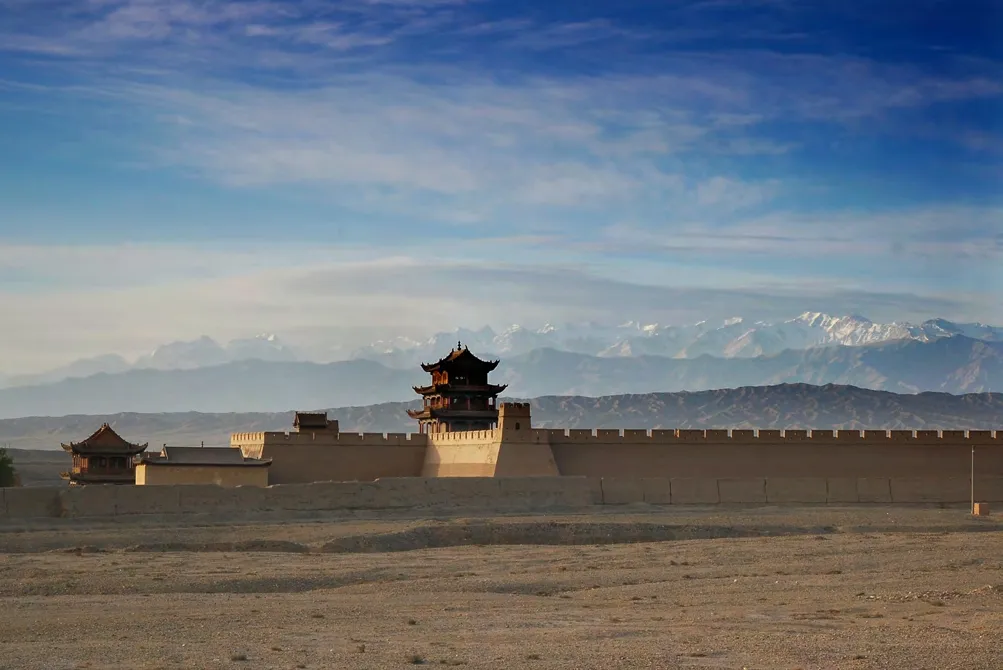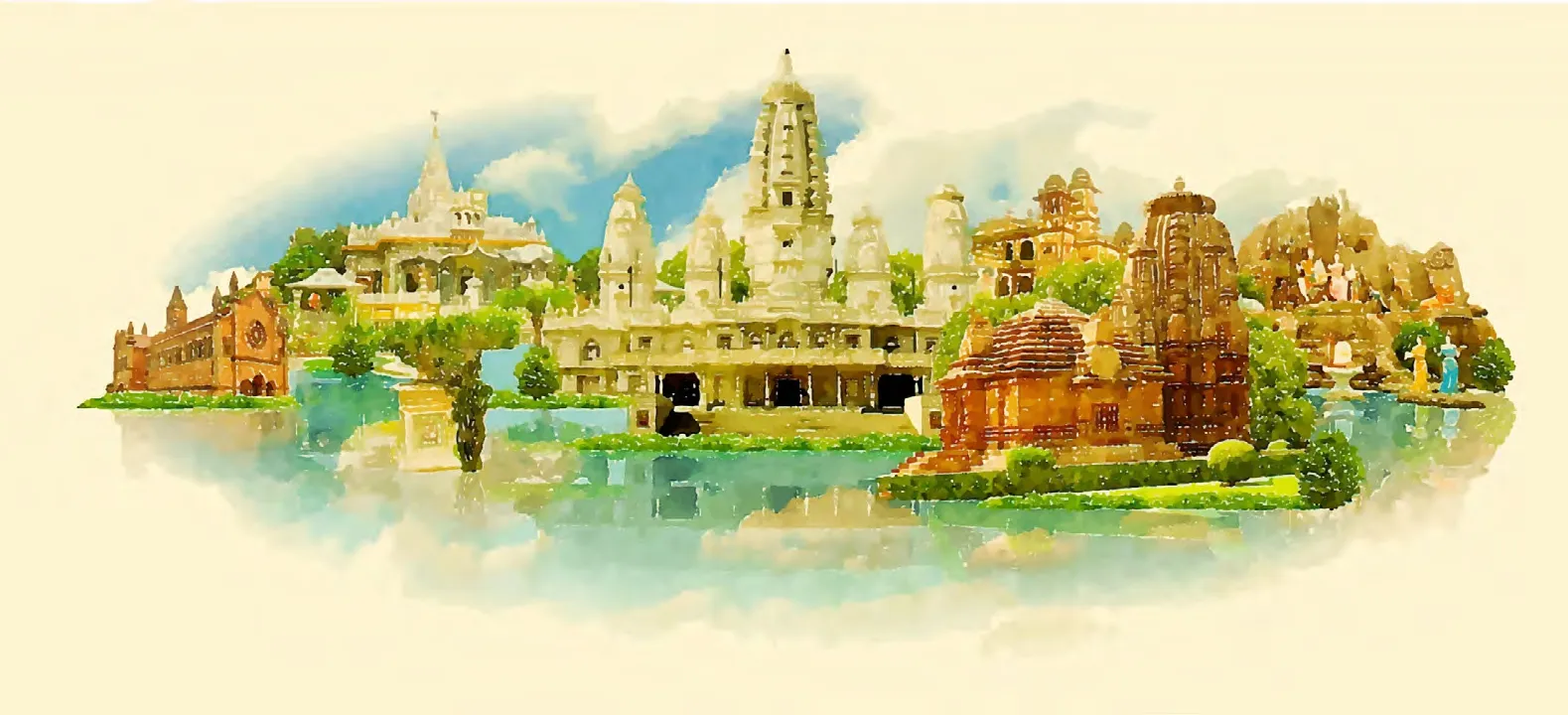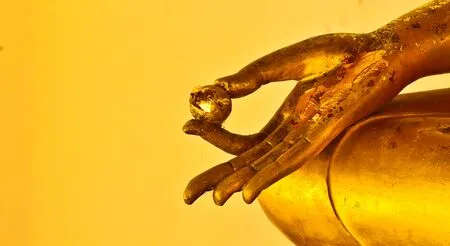The Strength of Belief
2018-04-10ByWangJueren
By Wang Jueren
This is the real “Journey to the West” in history

西安 玄奘像Statue of Master Xuanzang in Xi’an
Xuanzang, the famous monk Sanzang of Tang, was born in Goushi, Luozhou (Yanshi City of Henan Province today) and had the secular name of Chen Wei. When he was 11 years old, he was introduced by his second elder brother, Monk Changjie, to Buddhist doctrines in Jingtu Temple of Luoyang City. Two years later, in 608, by the emperor’s order, Zheng Shanguo, the Chief of the Supreme Court (“Dalisiqing”), came to Luoyang to “give government approval to the potentially qualified monks.”Xuanzang went to the interview.
Zheng had a good name for recognizing talent. He thought highly of Xuanzang by his disposition and appearance, so asked him why he would like to be a monk. “My intention is to carry on Buddha’s cause by widely spreading his teachings,” replied the boy. Zheng appreciated Xuanzang’s ambition. “If I give approval to this boy,” he said to his attendants, “he will be an invaluable treasure of Buddhism.”
According to the regulations,Xuanzang was too young to be approved as a monk. Luckily, Zheng made an exception for him. But even Zheng did not expect that little boy to be a person who would completely change the Buddhist history of East Asia.
玄奘,俗姓陈,名伟,洛州缑氏(今河南偃师)人,世称“唐三藏”。玄奘十一岁时,跟随他的二兄、已出家的长捷法师进入洛阳净土寺修学佛法。公元608年,大理寺卿郑善果奉旨到洛阳度僧,年仅13岁的玄奘闻讯前往。
素有“知士之鉴”的郑善果见其容貌俊逸、器宇不凡,就问他是否想出家,玄奘说想。郑善果又问他为何想出家,他答:“意欲远绍如来,近光遗法。”郑善果大为赞叹,对身边的人说:“若度此子,必为释门伟器。”
当时,玄奘年龄尚幼,本来是不能出家的,可郑善果却破格录取了他,将他剃度为僧。
郑善果预料到这个少年终将成为“释门伟器”、一代高僧,可他无论如何也不敢想象,自己此刻的这个决定竟然会深刻地影响此后一千多年中国佛教的历史。
偷越关卡
玄奘出家后,很快就精通了《大涅槃经》《摄大乘论》等重要的大乘经论。公元618年,天下分崩离析,熊熊战火燃遍中原,洛阳首当其冲。为了躲避战乱,同时也为了进一步深造,玄奘离开洛阳,前往天下的名山大寺参学,先是到成都,后来又辗转荆州(今湖北江陵)、扬州、相州(今河南安阳)、赵州(今河北赵县)等地,于贞观元年(公元627年)来到长安。
将近十年间,玄奘遍访名师、究通各家,此时已成为备受赞誉的一位高僧。但是在多年参学的过程中,玄奘逐渐发现,众多名师对佛法理解各异、歧义互见,而考诸现有各种佛典译本,却又颇多矛盾抵牾之处,令人无所适从,于是萌生前往印度求取更多佛学原典、尤其是大乘经典的强烈愿望。
恰逢当时中天竺(古印度)的僧人颇密多罗来到长安,给他介绍了著名佛教圣地那烂陀寺(在今印度比哈尔邦巴特那县)的学术规模,以及天竺高僧、该寺住持戒贤法师弘讲《瑜伽师地论》的盛况,更加坚定了玄奘西行的决心。他立即向朝廷上表,要求出关前往天竺。
由于当时出国之禁甚严,他的申请被驳回。但是玄奘始终没有放弃“誓游西方,以问所惑”的决心和信念,一直做着各种准备工作。

An Ominous Journey
In the early stage of Xuanzang’s religious career, he soon achieved mastery of the important Mahayana theories including the Mahapari-nirvana Sutra and Mahayana-samgraha. In 618,when Luoyang was under direct threat of the civil war, Xuanzang left Luoyang for other famous temples in China. He visited temples in Chengdu, Jingzhou(Jiangling County of Hubei Province today), Yangzhou,Xiangzhou (Anyang City of Henan Province today),Zhaozhou (Zhaoxian County of Hebei Province today), and then went to Chang’an, the imperial capital of Tang, in 627.
After a decade’s study and communication with various Buddhist schools, Xuanzang became a renowned master.However, only in the process of his studies did Xuanzang start to realize the essential incompatibility between the different understandings of Buddhism, and he further found that those different understandings were mostly caused by inconsistent translations of Buddhist scriptures. He then considered visiting India to study the original Sanskrit scriptures.
He became determined to see through his westward journey after meeting a monk from middle India, who introduced to Xuanzang the academic scale of Nalanda Monastery (which is located in Patna, Bihar state of India today), the famous shrine of Buddhism, and described the spectacular event when Master Silabhadra expounded the Yogacara-bhumi Sutra. Xuanzang promptly applied for an exit permit from the government.
By that time, such a permit was extremely difficult to get,and Xuanzang’s application was not surprisingly rejected. Yet he never gave up his resolution and belief. The monk made all the preparations and waited for an opportunity.
In August, 627, Chang’an and the surrounding areas were swept by serious frost and famine.When Xuanzang heard that the government allowed the victims to freely leave their homeland to make a living, he immediately grasped the opportunity. The monk disguised himself as a refugee, and snuck past the guards by hiding himself in a mob of refugees.

公元627年8月,长安和关东地区爆发了严重的霜灾和饥荒,朝廷同意灾民可以前往各地自谋生路。玄奘意识到时机成熟,做出一个大胆的决定——混在难民队伍中偷越关卡,西行求法。
此行前途未卜,生死难料。
出发的这一刻,除了简单的行囊和一腔求法的理想之外,玄奘什么都没有。
没有人知道,十九年后,这个孑然一身的“偷渡客”竟然会带着震古烁今的伟大成就载誉归来,不仅受到举国上下的盛大欢迎,而且得到太宗李世民的亲自接见。
没有人知道,他迈出长安的这一步,是在书写一页前无古人、后无来者的历史。
玄奘茕然西去的背影显得寂寞而苍凉……
艰难西行
走向天竺的这一路,充满了常人难以想象的艰辛。
一路上虽然没有白骨精和盘丝洞,没有牛魔王和火焰山,没有魑魅魍魉和九九八十一难,却有一望无际的大漠黄沙,有荒无人烟的戈壁荒滩,有关卡盘查、官吏缉捕的困扰,有缺水断粮、迷失方向的危险。所有这一切,都足以让他葬身在没有人知道的地方,或者迫使他心生懊悔,黯然东返……
然而,这一切都没有挡住玄奘的脚步。
早在迈出长安的那一刻,玄奘就已发出宏大的誓愿——
此行不求财利,无冀名誉,但为无上正法。
若不至天竺,终不东归一步。
宁可就西而死,岂能归东而生?(《大慈恩寺三藏法师传》)
这就是信仰的力量!
正是这样一种单纯而伟大的信仰,使他能够克服一切艰难险阻,甚至蔑视死亡的威胁,顽强地走向自己生命中的圣地……
玄奘从长安启程,经秦州(今甘肃天水)、兰州、凉州(今甘肃武威)、瓜州(今甘肃安西东南),出玉门关外五烽(五道重兵把守的关卡),进入“上无飞鸟,下无走兽,复无水草”的八百里戈壁——莫贺延碛,在克服了四天五夜滴水未进的困难之后,终于穿越这个可怕的死亡地带,经伊吾(今新疆哈密市)抵达高昌(今新疆吐鲁番东)。
高昌国王麹文泰盛情接待了他,但执意要求他留在高昌讲经说法,否则就要把他遣送回国。玄奘无奈,只好以绝食相抗,“水浆不涉于口三日”。最后,麹文泰被玄奘的至诚感动,提出两个放行的条件:一、与他结为兄弟;二、求法归来后在高昌停留三年。
玄奘同意。麹文泰大喜,当即“为法师度四沙弥以充给侍,制法服三十具;以西土多寒,又造面衣、手衣、靴、袜等各数事;黄金一百两,银钱三万,绫及绢等五百匹,充法师往返二十年所用之资;给马三十匹,手力二十五人”。(《大慈恩寺三藏法师传》)


What he faced was an unknown world and an ominous journey. All he had was a travelling bag, and his simple beliefs.
Nobody could foresee that this lone walker would come back in 19 years with astoundingly rich treasure, and would be welcomed by the whole empire and Emperor Taizong himself. Nobody could know that his departure was actually the beginning of a great, unprecedented page in the history.
The world just ignored that nondescript figure going westward.
Years of Peril
The journey was full of hardships. Although there were no such characters as Lady White Bone or Bull Demon King, as what we could read in the famous novel Journey to the West, the boundless deserts, the insolent foreign officials, and the danger of starvation and getting lost were all but real. He could have ended up a nameless corpse in an unknown place, or he could have regretted his reckless actions and turned around to home. But he continued his steps.
He already made his pledge the moment he left Chang’an:
I start this journey without longing for wealth or fame. What I need is only Saddarma.
I will not take a single step back east unless I arrive in India.
I would rather die in the westward journey than come back home to live.
——Biography of Master Sanzang, Daci’en Temple
此外,为了玄奘能顺利西行,麹文泰还专门准备了二十四封国书,命护送的大臣交给沿途的二十四国国王,每书奉送大绫一匹为礼物;还亲手写了一封文辞谦恭的信,随信献上“绫、绡五百匹,果味两车”,请求西突厥统叶护可汗致信其势力范围内的西域诸国,为玄奘法师提供尽可能的帮助。
就这样,玄奘离开高昌,过焉耆、龟兹等国,翻越凌山(葱岭北部),到达碎叶城(今吉尔吉斯斯坦托克马克西南),会晤了统叶护可汗。随后,在统叶护可汗致所经诸国的信件和护送使节的帮助下,玄奘顺利经过西域诸国,过铁门关(今乌兹别克斯坦南部),入吐火罗(今阿富汗北部),而后沿今巴基斯坦北部,过克什米尔,进入北印度。
声名鹊起
贞观五年(公元631年)秋天,玄奘终于抵达朝思暮想的佛教圣地——那烂陀寺。在这里,玄奘拜戒贤为师,潜心学习梵语,研习各种大小乘经论,尤其专攻印度法相宗(唯识论)代表作《瑜伽师地论》,历时五年。此后,玄奘遍访五天竺,足迹留在了印度各地。
贞观十五年(公元641年),玄奘重回那烂陀寺。此时他的学业已经粲然大成,戒贤命其升座为众讲解大乘唯识经典。在此期间,他著有《会宗论》,会通了印度大乘“瑜伽”“般若”二宗,将唯识与中观学说相互融贯,自成一家。此外,由于当时南天竺的小乘僧人著有《破大乘论》攻击大乘学说,负面影响很大,玄奘应戒日王之请,又撰写了破除小乘见地的《制恶见论》。
从此,玄奘在印度声名鹊起。
贞观十六年(公元642年),玄奘又在戒日王举办的曲女城无遮大会上挫败了五天竺所有的论敌,其盛名更是如日中天,几乎取代戒贤,成为全印度造诣最深、声誉最隆的佛教思想界领袖。
玄奘意识到自己的使命已经圆满完成,遂于贞观十七年(公元643年)告别了戒贤法师和戒日王,返回中国。经过两年的时间,在贞观十九年(公元645年)正月二十四日,玄奘终于回到了阔别将近二十年的长安。
和他一起回到中国的,是657部具有高度学术价值的梵文佛典。
玄奘大师的西行求法,前后历时十九年,行程共计五万里,堪称世界中古史上一次艰难而伟大的探险之旅、朝圣之旅,也是意义最为深远的一次学术和文化之旅。
玄奘回到长安的时候,受到了朝野上下隆重而盛大的欢迎,一切与他当年偷越国境时寂寞而苍凉的境况相去不啻霄壤。
然而,玄奘还是当年的那个玄奘,信仰还是当年的那个信仰。◆
(摘自《唐朝原来是这样》现代出版社)

Yes, this was the strength of belief, and only with this belief could Xuanzang ignore the threat of death and overcome all the difficulties in his journey to the holy place.
He left Chang’an, passed Qinzhou (Tianshui City, Gansu Province today), Lanzhou,Liangzhou (Wuwei City, Gansu Province today), Guazhou(southeast to Anxi County,Gansu Province today), Yumen Pass, and five more heavily guarded customs passes, and then entered Kumtag Desert, the 400 kilometers long Gobi Desert where “no birds, beasts, grass,or even a drop of water could be found.” After four days and five nights’ journey without supplies,he walked out of the horrible dead zone, stopped briefly at Yiwu(Hami City, Xinjiang Autonomous Region today), and reached Gaochang (also called Karakhoja,east to Turpan, Xinjiang today).
Xuanzang accepted the conditions, and the happy king“appointed four attendant monks to Xuanzang, gave him thirty kasayas, and lots of clothes,mittens, boots, and socks to protect them from western coldness; he also gave the master one hundred taels of gold, thirty thousand taels of silver coins,and five hundred rolls of silk for his traveling expenses in the next twenty years; other gifts included thirty horses and twenty-five servants.” (See Biography of Master Sanzang, Daci’en Temple)
As Xuanzang was going to pass another 24 kingdoms before he could reach India, Wentai also prepared 24 credentials;each was to be presented to a king along with a roll of silk as gift. Moreover, the friendly king wrote with his own hands a humbly worded letter in which he asked Tong Yabghu Qaghan, the powerful monarch of the Western Turkic Khaganate, to provide necessary help to Xuanzang in the Khan’s sphere of influence. Along with the letter, “five hundred rolls of silk and two carriages of dried fruits” were to be given to the Khan as Wentai’s gift.
Xuanzang left Gaochang and passed through kingdoms such as Karasahr and Kucha, crossed Lingshan Mountain (in the north of Congling Ridge), and then arrived in Suyab City (southwest to Tokmok, Kyrgyzstan today)where he met Tong Yabghu Qaghan. With the help of the Khan’s envoys (who carried the monarch’s letters to the kingdoms), Xuanzang passed the kingdoms of “the Western Regions,” the Tiemen Pass (south to Uzbekistan today), Tochari(north to Afghanistan today),and the regions now known as Pakistan and Kashmir, and finally entered northern India.
Became a Religious Leader

In the autumn of 631, Xuanzang finally arrived at the holy place of his dream, Nalanda Monastery.In the next five years, he became a student of Master Silabhadra and learned Sanskrit as well as theories of various schools(especially the master work of Dharmalaksana, Yogacara-bhumi Sutra) with great concentration.After that, Xuanzang visited the temples of all the five regions of India.
In 641, Xuanzang returned to the Nalanda Monastery. He was already a senior scholar by the time, and Master Silabhadra appointed him to expound the Dharmalaksana scriptures for the general monks. During that period, Xuanzang wrote On the Integration of Schools(Huizonglun) in which he integrated the theories of the two major schools of Mahayana,Yoga, and Prajna. When the Hinayana monks in south India wrote A Refutation against Mahayana, at the invitation of King Siladitya, Xuanzang wrote A Refutation against Heterodoxy and successfully defended the orthodoxy of Mahayana.
Xuanzang earned his fame in India through this work. That fame and respect reached a climax when he defeated all his opponents in the Kumbh Mela debate held by King Siladitya in the city of Kanyakubja in 642. Many thought he had replaced Master Silabhadra to be the religious leader of Indian Buddhism.
He knew that it was the right time to return back to China. In 643, he bid farewell to Master Silabhadra and King Siladitya.Two years later, on January 24,645 (according to Chinese lunar calendar), Xuanzang arrived in Chang’an, a place he had not seen in over 19 years, along with 657 invaluable Buddhist scriptures in Sanskrit.
19 years and 25,000 kilometers:Xuanzang’s arduous journey to the west was actually a great pilgrimage as well as a discovery of precious culture and academics in the ancient history of the world.
When Xuanzang went back to Chang’an, both the government and the people welcomed him with a grand ceremony.How different it was from his departure!
However, Xuanzang remained the same person as before; and his belief also remained the same as before.◆
